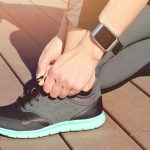
The “choking game” — and other clearly ill-advised and dangerous internet challenges — leave many parents wondering what drives teens to take the bait and participate. Now, a new study suggests that an underlying psychological disorder may be one reason why some kids jump at online dares such as the “Bird Box” challenge, where people walk around blindfolded, and the Tide Pod challenge, daring people to eat laundry detergent. The French researchers, who decided to focus on the choking game, found that nearly 10 percent of the almost 1,800 middle schoolers surveyed had tried it. Those who had participated were about twice as likely to be depressed or to have a conduct disorder. “Parents of adolescents with behavioral problems, as well as parents of depressed teens, need to be aware of this serious problem in order to educate and monitor their vulnerable youth,” said Dr. Victor Fornari. He directs child and adolescent psychiatry at Zucker Hillside Hospital in Glen Oaks, N.Y., and Cohen Children’s Medical Center in New Hyde Park, N.Y. Fornari said this study highlights that “prevention strategies need to be developed to intervene in this dangerous behavior.” The choking game is a thrill-seeking activity where people self-strangulate or have someone else strangle them to the point of passing out. Supposedly, the lack of blood and oxygen to the brain causes a temporary euphoric… read on >



































